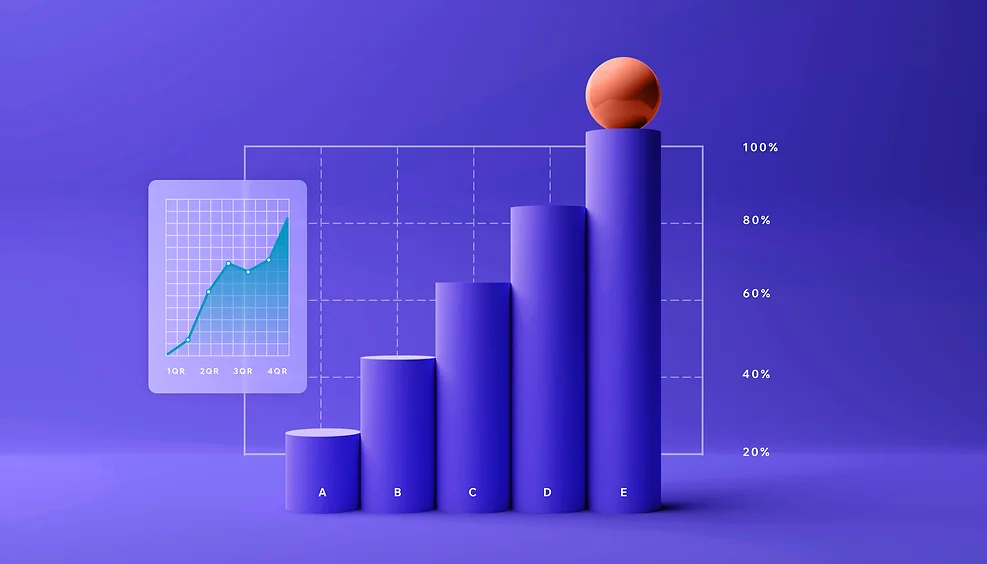
Conversion-rate-optimization (CRO) literature is full of outdated practices and myths. To help clients focus on customer growth, they need updated information on what CRO can accomplish. Here are four effective CRO techniques that you can execute to maximize the potential of your website's conversions as part of your wider marketing strategies.
How to win at conversion rate optimization
01. Adopt multiple testing methods to gain more insights
A/B testing provides immediate comparison and results, which is useful for specific verticals like email and social media. But for your website, there are additional methods for gaining insight into customers’ behaviors throughout the customer journey.
When you dive deeper into your Google Analytics or create a heat map for a landing page, you gain a better understanding of what draws them to the website or what catches their attention. Here are a few methods to enhance your A/B testing:
Multivariate testing: Unlike A/B testing, multivariate testing takes many theories your clients have and tests all of them at once. Think about changing a CTA button’s color, placement, and message: Have two color variations, two placements, and three phrases, and you end up with 12 versions to test. This type of testing offers even quicker results on how each combination performs and impacts conversions.
Usability testing: When you set up a new funnel or task, conduct user tests to see how they navigate the website to get to your calls to action. Have first-time visitors gauge what the user experience is like since seasoned customers know how to work through the website to get to their goal. Make sure that you record each test, and note any challenges or roadblocks they encounter.
Surveys: Research allows you to craft user personas for your clients, which are particularly helpful if they haven’t updated theirs in a few years or have lost sight of opportunities to capture another part of the market. Get direct feedback from their customers by creating a pop-up or email survey to gather information (bonus if there is an incentive to convince users to provide their feedback).
A/B testing is great for observable differences, but it requires additional research that will allow you to have more options to work with for future testing.
02. Maintain your best performing pages
Everyone hesitates to touch a page that performs. But that’s no reason to leave pages as they are. Showing how you continuously improve CRO with updates is crucial to growing any business. Google updates their core algorithm at least every year, if not several times in a year. Leading from this example, we should be informing clients to update top-performing pages at least once a year to keep customer conversion high on those pages. These updates shouldn’t focus just on SEO optimization, but should consider how the page leads both potential and new customers through your client’s funnel.
Here are a couple of ways you can optimize CRO on top performing pages:
Design, design, design
Aside from copy changes, consider a design refresh that allows you to change elements of your CTAs.
Marketing SaaS company DashThis was successful at getting people to sign up for a free trial of the company’s software but noticed that many users abandoned the trial. Users complained that they were not able to quickly connect their marketing data. Using Hotjar, DashThis’s UX team modified the location and sizes of the buttons and added a search bar to help users quickly figure out a solution. These CRO changes resulted in increasing DashThis’s onboarding process by 50%.
Dangling the carrot
You can also implement CRO efforts that provide incentives as an extra push to convert, for example, integrating a pop-up for first-time visitors to receive a discount in exchange for their email address.
Another CRO push: testing the placement of any special offers alongside CTAs, such as listing details about the special offer next to the “Buy” button. Multimedia content creation company Avid did when they A/B tested details about their bonus offer via a banner versus bullet points on their Media Composer software product page. They realized the banner outperformed the bullet points by 34%, which led them to test another promotional sticky banner on their homepage, blog, and shopping site that saw a 15% conversion rate on the site.
03. Test beyond the standard two-week cycle
Digital experimentation expert Chad Sanderson notes that large companies like Google and Facebook set the standard CRO test time of two weeks based on customer behavior. Instead, you need to test for a full customer cycle to get the most information from your strategy and to achieve any kind of statistical significance.
According to Sanderson, large companies with a daily base of millions of users can work within a two-week test window because customers’ website and search habits are consistent week to week. This cyclical behavior is a big indicator for clients to understand their full customer cycle.
Customer cycles vary per industry, so whether it’s less than two weeks or more than two months, knowing the customer cycle allows you to conduct experiments based on data versus what bigger companies are capable of doing with more daily traffic. Remember to note any testing that may occur during the holidays or annual sales, because that impacts the typical customer cycle: customers convert quickly to take advantage of special offers — but they may not return until the next incentive.
04. Test your CRO and be open to experimentation
When you limit your views on what CRO looks like and how to conduct it, your clients miss opportunities to gather information that will make their businesses grow. The trick? Test your CRO methods and be open to experiment to get the most from your website, and win more business in the long run.